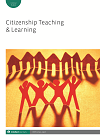
Full text loading...

Before COVID-19, universal demand for distance education was increasing. During the pandemic, the virtual delivery of public education surged. In turbulent times, citizenship, teaching and learning can present a creative opportunity for fostering online development, high-quality interaction and academic progress. The purpose of this conceptual article is to imagine online learning as a space of possibility for learners in pandemic-burdened societies. The well-known community of inquiry (CoI) framework is described along with its elements of presence – cognitive, social and teaching. In particular, the cognitive element is illustrated with curricular examples attuned to citizenship education. Robust online CoIs allow people to collaborate in a social learning context through dialogue and critical reflection on pivotal issues. The CoI framework offers meaningful learning supported by each of its ‘presences’, which deepen reflection and propel success. Anchored in the CoI model, this original treatment is applicable in theory to participants of all ages.

Article metrics loading...

Full text loading...
References


Data & Media loading...

Publication Date:
https://doi.org/10.1386/ctl_00059_1 Published content will be available immediately after check-out or when it is released in case of a pre-order. Please make sure to be logged in to see all available purchase options.